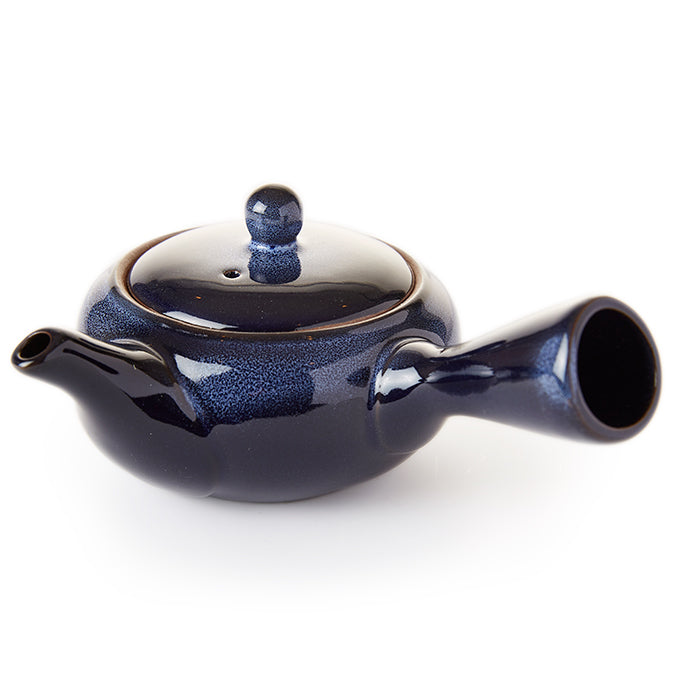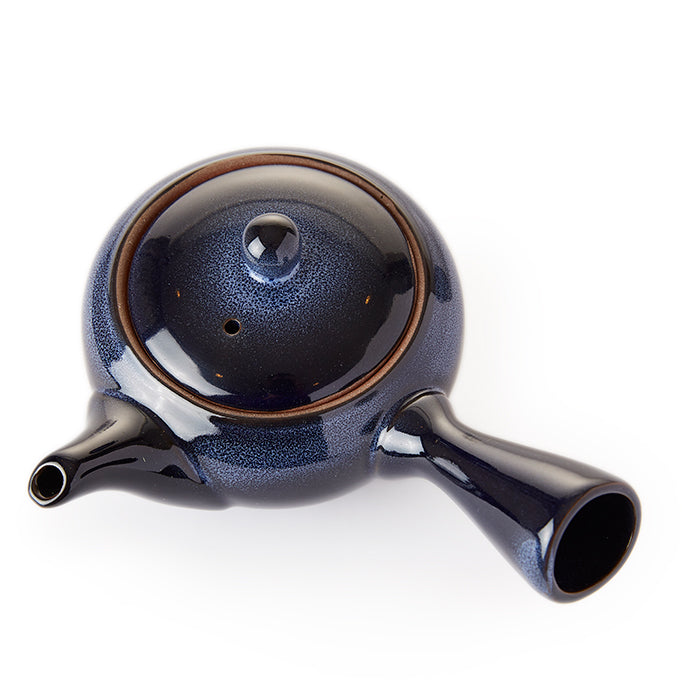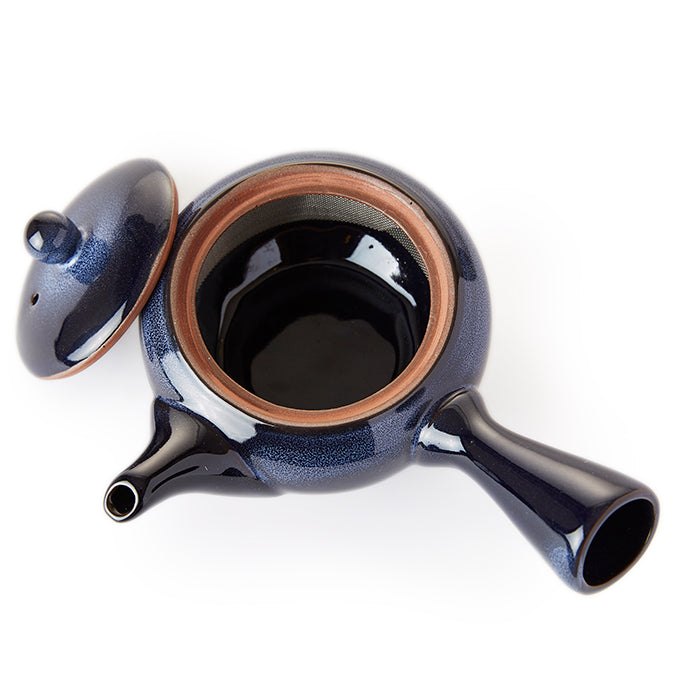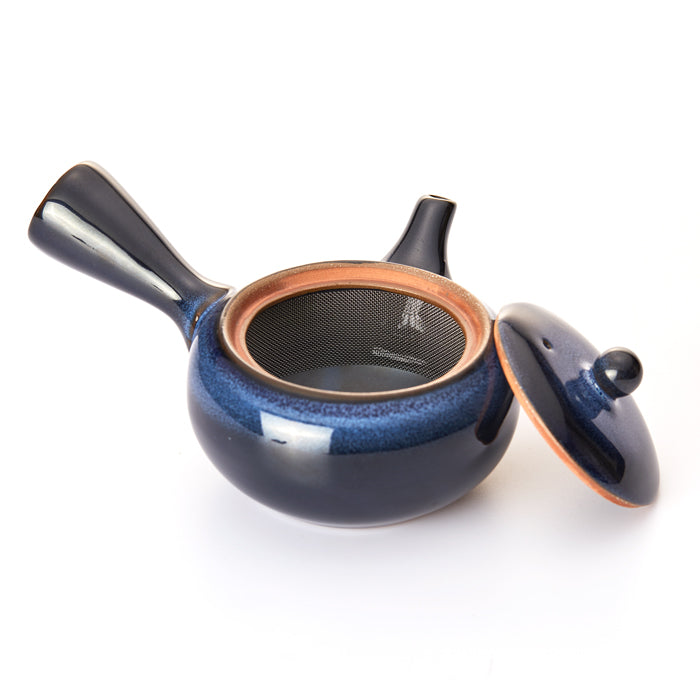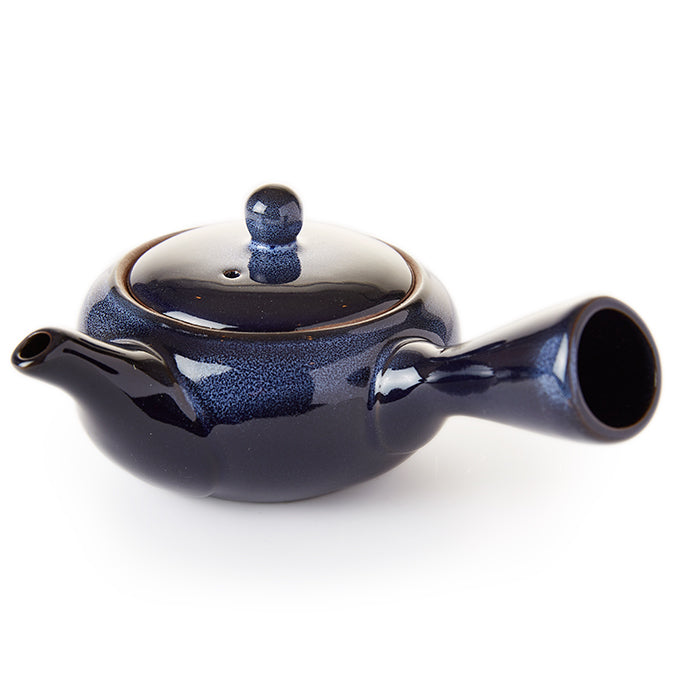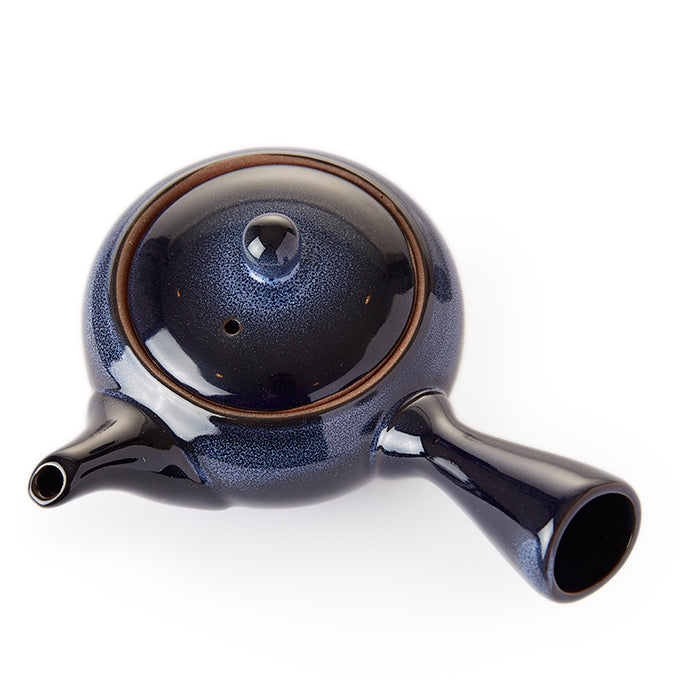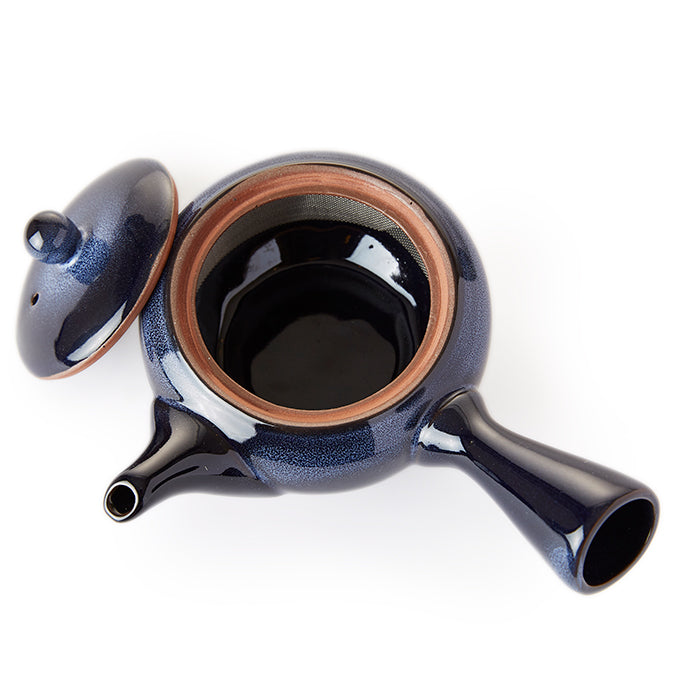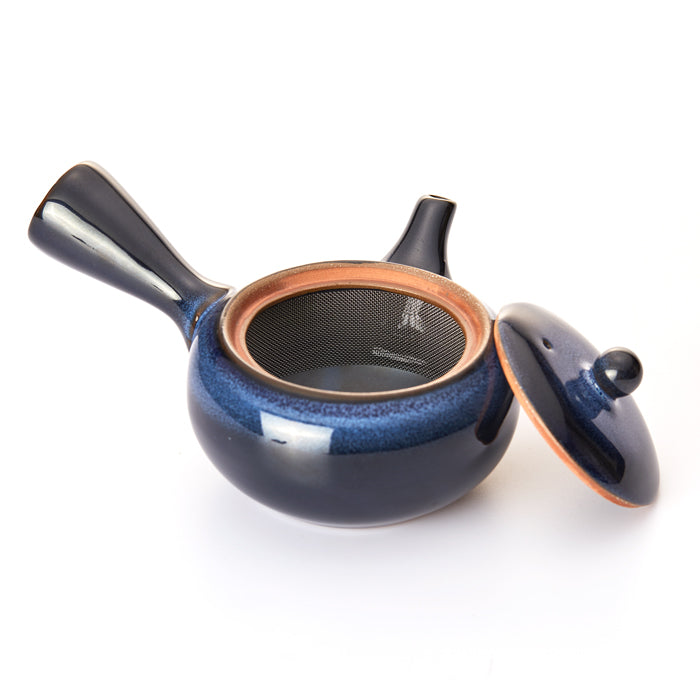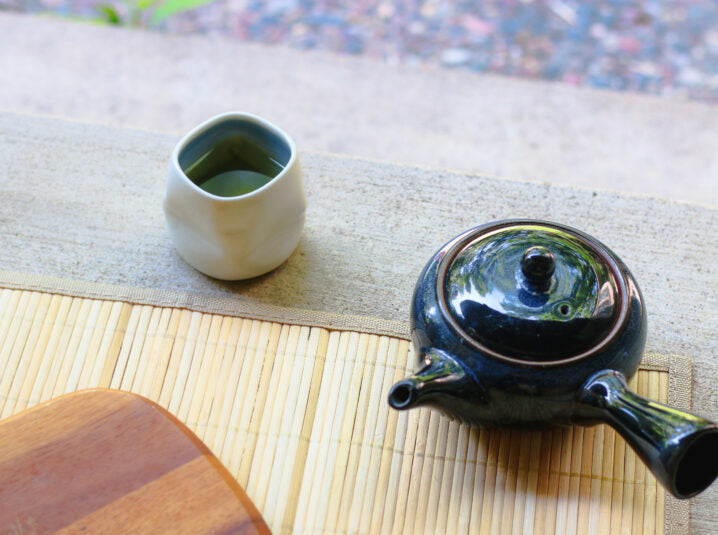
How to Use a Kyusu or Traditional Japanese Teapot
A kyusu, sometimes spelled kyuusu, is a traditional Japanese teapot used for brewing Japanese green tea. The most common type of kyusu comes with a handle on the side, although it can also have a handle on the back or over the top. It is usual for a person to use the term kyusu to refer to a teapot made for sencha (Japanese green tea) and use more specific terms for teapots made for other teas.
Kyusu teapots are small compared to Western standard teapots. The usual size is 270ml, but they can even be much smaller. Not to mention, the style of traditional Japanese teapots can vary widely. Handle placement, shape, and color can be different.

Kyusu: Three Main Styles
A kyusu comes in three primary styles:

1. Yokode Kyusu: Side-Handle Teapots
Yokode kyusu is Japan’s most iconic teapot shape and is the perfect teaware for regular drinking. This is due to its small size, which makes it great for brewing small quantities and drawing out the complete taste of the leaves, along with the most astringent flavor concentrated in the final pour.

2. Ushirode Kyusu: Back-handle teapots
Ushirode kyusu, a style originally inspired by clay teapots introduced to China through trade routes centuries ago, resembles teapots you find in Western countries. Today, this timeless teapot style, with its characteristic silhouette, stands as one of the most popular choices in Japan for brewing Chinese and European blends. Its moderate size also renders it perfect for brewing several servings of green tea at a time.

3. Uwade Kyusu: Top-handle teapots
Uwade Kyusu refers to any Japanese teapot with a handle on the top. While you may not know it by name, you are perhaps familiar with the most popular style of top-handle teapots known as “dobin” in Japan. Their larger handles, which are commonly made from rattan or bamboo, allow for an easy grip that helps in protecting your hands from the heat-conducting material of the vessel. This size is even more convenient for brewing larger amounts of green tea.

Why You Should Use a Kyusu Teapot
Kyusu is uniquely made to brew green tea, as Japanese green teas typically have their own unique flavor and aroma. This is because the clay of the teapot keeps the heat steady, ensuring a truer taste of the tea. Kyusu teapots are a perfect blend of artistry, practicality, and craft. Most importantly, they are easy to use as well as care for.

How to Prepare Green Tea using Kyusu
There’s no doubt that the kyusu pot is ideal for brewing the perfect cup of Japanese green tea. As with preparing any tea, finding the perfect balance of infusion time, the amount of tea, and the temperature of the water is quite important. Before you begin, gather the following items:
- Kyusu teapot
- Water cooling pitcher - yuzamashi
- Teaspoon
- Teacups
Once you are ready follow the below steps carefully:
- Step 1: Cool Water & Measure Tea You can start by boiling fresh water in an over-the-stove kettle or using an electric kettle. Next, you will need to cool down the water to the ideal brewing temperature in your yuzamashi or water cooling pitcher.
- Step 2: Add Tea Next, measure five grams (approximately 1 teaspoon) for a kyusu with roughly 200ml to 250ml of water. Then add the measured tea to a dry and clean kyusu teapot.
- Step 3: Add Water Once the water has cooled to a suitable temperature, fill about 90% of the Kyusu pot with water. Make sure to leave some room at the top for cleaner decantation.
- Step 4: Infuse Add the lid for the recommended infusion time, generally about one to two minutes for Japanese green tea.
- Step 5: Pour To pour, hold the kyusu in your hand while you secure the lid with your thumb. Pour the tea from the teapot by rocking it back and forth with a gentle wrist motion. Pour a small amount of tea into each teacup, alternating from one teacup to the next at least 6 or 7 times to make sure that each cup gets an equal amount of tea.

More Facts and Tips about Kyusu Teapots
- Many kyusu come with a dip around the inside bottom. This serves as a small gulley for additional water to go to between infusion times, in order to prevent the tea leaves from brewing in the remaining drops.
- Generally, Kyusu has a plastic ring that is secured around the spout. Some people keep this on because it helps in preventing drips from occurring while pouring.
- Kyusu is often made from tokoname, a common kind of clay.
- You should never clean a kyusu teapot with dish soap.
- You should never place the teapot directly onto fire.
- Leave the kyusu to dry naturally, with the lid off.
It’s time to get a high-quality kyusu and green tea to prepare a perfect cup of tea and enjoy!
🍵 Drinking our tea? Snap a pic and tag us on Instagram at @senbirdtea or #senbirdtea. We’d love to see your moment with tea!
If you want to read more articles on teaware, check them out here:
- 4 Ways to Brew Loose Leaf Tea Without and Infuser
- 3 Ways to Make Matcha Without a Whisk
- 8 Essential Teaware Tools for Every Tea Lover
- Japanese Cast Iron Tea Kettles: A History of the Tetsubin
- How to Brew Green Tea with a Yuzamashi
- How to Make Matcha with a Bamboo Whisk
Share your moment with us and stay connected on:







